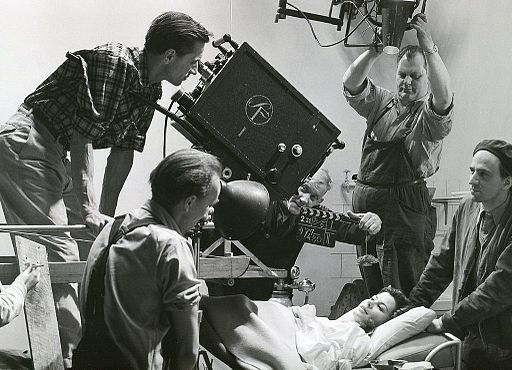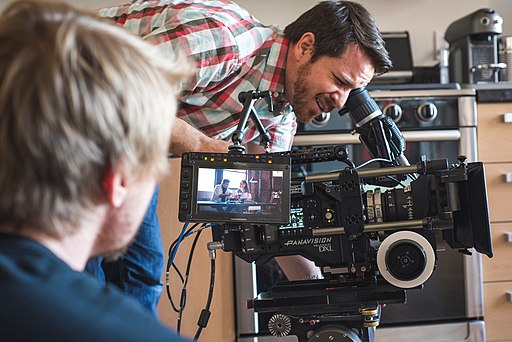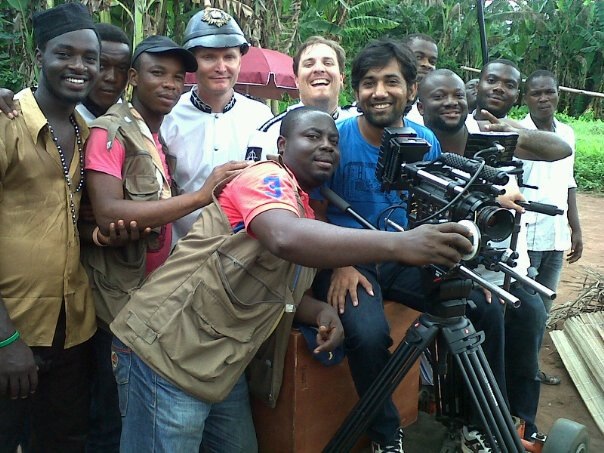WORKPRINT STUDIOS BLOB POST #10 - Cinematography
Filmmaking Blog
Welcome to the Workprint Studios Blog.
WORKPRINT STUDIOS BLOB POST #10 - Cinematography
The Art of Film Cinematography: A Visual Storytelling
Cinematography is an art of visual storytelling that uses the camera as a tool to capture and convey emotions, moods, and ideas. A skilled cinematographer can transform a mundane scene into a cinematic masterpiece by using techniques such as framing, lighting, camera movement, and color. In this essay, we will explore the significance of cinematography in film history, its impact on storytelling, and the contributions of some of the most prestigious cinematographers.
The Early Days of Cinematography
The invention of motion pictures in the late 19th century revolutionized the world of art and entertainment. Cinematography was born, and with it, a new language of visual storytelling. The Lumière brothers, who are credited with inventing the first motion picture camera, made short films that captured everyday life in a realistic style. The films lacked the dramatic narrative structure that we associate with modern movies, but they set the foundation for a new medium of expression.
The Rise of Hollywood and the Golden Age of Cinematography
In the early 20th century, Hollywood became the epicenter of the film industry, and cinematography became an essential element of filmmaking. The golden age of Hollywood cinema, which spanned from the 1920s to the 1960s, saw the rise of many legendary cinematographers such as Gregg Toland, James Wong Howe, and Karl Freund. These cinematographers were pioneers in the use of new techniques such as deep focus, low-key lighting, and wide-angle lenses, which allowed filmmakers to tell stories in new and innovative ways.
The Evolution of Cinematography in the Digital Age
The advent of digital filmmaking in the 21st century brought about significant changes in the art of cinematography. The use of digital cameras, which are lighter and more versatile than traditional film cameras, has made it easier for filmmakers to experiment with different shooting styles and techniques. Digital cameras also allow for real-time monitoring of the footage, which gives cinematographers greater control over the final product.
The Importance of Framing and Composition
Framing and composition are crucial elements of cinematography that can make or break a shot. A skilled cinematographer knows how to use the camera to create a visual language that conveys the mood and emotion of a scene. They use techniques such as the rule of thirds, leading lines, and symmetrical and asymmetrical framing to create balance and visual interest.
The Power of Lighting and Color
Lighting and color are powerful tools that cinematographers use to create atmosphere and convey emotion. They can use high-key lighting to create a bright, happy mood, or low-key lighting to create a sense of tension and unease. Color grading is another technique that can be used to create a particular mood or tone. The use of warm colors such as red and yellow can create a sense of comfort and intimacy, while cool colors such as blue and green can create a sense of distance and detachment.
The Contributions of Legendary Cinematographers
Throughout film history, there have been many legendary cinematographers who have made significant contributions to the art of visual storytelling. Some of the most prestigious names include Roger Deakins, Emmanuel Lubezki, Gordon Willis, Vittorio Storaro, and Sven Nykvist. These cinematographers have created iconic images that have become synonymous with the films they shot, and their work continues to inspire and influence filmmakers today.
Conclusion
Cinematography is a vital element of filmmaking that allows filmmakers to tell stories in new and innovative ways. From the early days of motion pictures to the digital age, cinematography has evolved and adapted to the changing times. Techniques such as framing, lighting, camera movement, and color are essential tools that cinematographers use to create powerful visual stories that captivate audiences. As we have seen, some of the most prestigious cinematographers in film history have made significant contributions to the art of visual storytelling, and their work continues to inspire and influence filmmakers today.
DID YOU KNOW?
- Did you know that the first motion picture camera was invented by the Lumière brothers in 1895, and it could shoot up to 16 frames per second?
- Did you know that the legendary cinematographer, Gregg Toland, used a technique called deep focus in the 1941 movie Citizen Kane, which allowed him to keep both the foreground and background in sharp focus, creating a new level of visual storytelling?
- Did you know that the famous director and producer, Stanley Kubrick, worked with cinematographer John Alcott on films like A Clockwork Orange, Barry Lyndon, and The Shining, and they pioneered the use of natural light and candlelight in film lighting?
- Did you know that the cinematographer Roger Deakins has been nominated for 15 Academy Awards and has won 2 Oscars for his work on the films Blade Runner 2049 and 1917?
- Did you know that the use of color in films has evolved over time, from early two-color Technicolor to the more advanced three-strip Technicolor, which was used in classics like The Wizard of Oz and Gone with the Wind?
- Did you know that the famous cinematographer Emmanuel Lubezki used a technique called the "naturalistic aesthetic" in the movie The Revenant, which involved using only natural light and shooting the entire film with natural light sources?
- Did you know that the acclaimed cinematographer Gordon Willis, known as the "Prince of Darkness," was responsible for the iconic lighting and framing in the films The Godfather and Manhattan, which have become benchmarks of cinematography?
Where you can find us.














